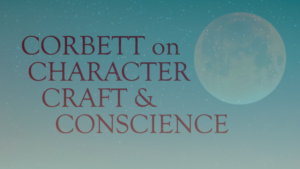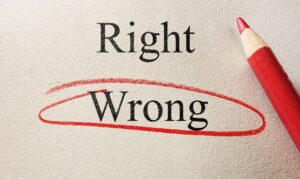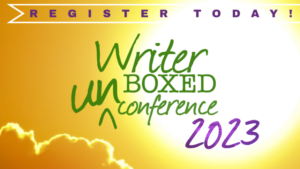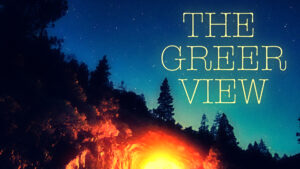provocations
My son lives in Los Angeles, and you’ll understand that while we’ve been watching the wildfires out there with horror for those experiencing immediate loss, we’ve also had heightened concern for our son. When he called to tell us that he’d received an evacuation order from the city, he also admitted he hadn’t yet packed a bugout bag. He had no time to listen to our volley of suggestions—“Don’t forget your passport!”—he had to move.
Ironically, two months prior, while moving into a new apartment, he lost a bag filled with—in his words—“everything I’d grab in a fire.” It was excruciating for him to digest the loss of these items, which were not of the passport variety. A denim 80s Guess jacket that belonged to his dad. A painting made by a loved one. The worn skateboard that saw him through college.
Chaos on the outside can cause chaos on the inside, of course. And so after that loss, he misplaced things he never normally would have, including a credit card. His mind had been elsewhere, you might assume, though he’s also wondered—only half-jokingly—if his new apartment is home to a poltergeist.
When the fire came, it was with this additional context. He knew that what you save in a fire goes beyond practicalities like “passport” and even beyond sentimental replacements, like the new old Guess jacket we’d given him for Christmas—a replica of the one he’d lost. And only he could decide what was worth saving.
So how do you decide what’s worth saving when you have limited time and space? And what, if anything, can you deduce from this when it comes to creating characters for your novel? Is there a way you can push your characters to reveal themselves through choices forged in fire?
Choices Forged in Fire
Moments of crisis can become a powerful lens that reveals character in a way few other situations can. That’s because the pressure to choose has a way of calling everyone’s bluff—revealing core values and hidden attachments beyond the easier-to-explore surface of character. It calls the author’s bluff too, as pushing a character into the fire can illuminate for you what’s important to them.
Imagine your protagonist faced with a literal fire, given only five minutes to choose what to save. Now ask yourself:
Read More
The creation of fictional worlds with tight internal logic and vivid details that bring them to life. Characters who feel so real we care what happens to them. Storylines that cause laughter, tears, disbelief, and the ability to consume our attention—even blur the line between fantasy and reality.
Am I describing novelists/novels here or politicians/politics? Probably both, here in 2024.
I’m sure I’m not the only one who’s noticed similarities between the methods we use to create fiction and the tools of mass manipulation some politicians lean on these days. So while it might seem like they’ve been stealing from our playbook, let’s see if we might learn a thing or two from them.
Understand Who Wields Control and How Information Moves
In today’s world, control of information is one of the most powerful tools available to those with a platform–and political figures (and owners of social-media companies) have some of the biggest around. The combination of platform and a person’s character matters a whole lot. A caring person on a big platform can do much good–shout out to Oprah Winfrey–but a self-serving person on a big platform can do a lot of harm. Whether it’s cherry-picking facts, distorting statistics, or repeating the same selective or false narrative until dissenters are either drowned out or start nodding in agreement, those who hold power often manipulate information to twist fact and fate to their favor, and to maintain control.
How to use it: To make control dynamics feel authentic in your wip, consider how information moves in your fictional world and where the power lies–the people who hold sway with others, the community leaders, the fire-starters. Who presents themselves as a hero when they’re really manipulating the narrative for their gain? Who benefits from the way things are, and who stands to lose if the status quo is upended?
It’s not only likely you have one potential power dynamic in your manuscript but several. If you struggle to find them, look for relationships between players of unequal power. This might be as common as a parent-child relationship or as unique as one between an animal trainer and an elephant. Now ask yourself if the inequality there is being utilized or neutralized. Unless the person/player with influence is genuinely a Switzerland of your story, you may have left some power plays on the table.
If you do have a character who in some way abuses authority, be sure to spend some time considering the why of it, as thin or no motivation here can deliver a thin character. Some possible motivations include consolidating or maintaining power; attracting allies; suppressing opposition or progress; providing others with a narrative so they don’t think critically for themselves; simplifying complex issues into black-and-white terms and suppressing nuance; distracting others from their own flaws or vulnerabilities; preventing harm to something they value, including themselves; and financial or other personal gains.
Try it: Draft a scene where a character discovers that something they’ve believed their whole life was a carefully constructed lie. What information was withheld from them, and who controlled it? How does the revelation change the course of the story?
Divide to Conquer
Division is one of the most powerful tools in a manipulator’s arsenal. It’s easier to maintain control over people when […]
Read MoreI’ve been in multiple book clubs, each with its own personality and reading preferences. I love book clubs for the discussions they foster and for the enthusiastic recommendations that members of those clubs make. As a result of my book clubs, I’ve read many books I would otherwise have skipped over or never even known about.
Several of my book clubs over the years have included readers who qualify their book recommendations by listing and justifying any undesirable (by their definition) elements of the book: it has a lot of swearing, but the story is important. It includes one sex scene, but it’s not too explicit. There’s a really gruesome murder, but it’s just the first chapter. For these readers, the value of the story triumphs over qualms about specific content.
Other times, the concerns win out: I wanted to read it but my sister told me it uses the f-word a lot. I don’t read books with sex scenes. And so on.
Book banning and cancel culture have become common on all political sides, with everyone citing the same putative benefit of preventing exposure to harmful content or individuals. Devoted readers and writers of all stripes, however, condemn book banning because it removes individual agency and panders to the fear that one’s own truth cannot withstand honest scrutiny.
So what should we think about self-censoring?
I believe everyone should have the right to decide for themselves what they will and won’t read, so deciding against something—while leaving it available to others—is as valid a choice as its opposite. I submit, however, that society as a whole benefits when we are willing to push our own boundaries enough to sit with the discomfort that some elements of story create.
I once taught a history class with an accompanying film lab. Every week we discussed a set of readings related to a single topic and then watched a film on Friday afternoon that explored the same issues in a way that added complexity or that drove it home in a more visceral way. My classes consisted of university students, aged 18 to 23.
One semester I taught a student—an adult, by definition—who refused on moral grounds to watch any film rated higher than PG-13. He also looked up the content of unrated films on the list, like The Third Man, and decided whether or not he considered them suitable (that one wasn’t, in his view, due to the inclusion of a two or three second scene in which a woman is dancing suggestively in a club).
Apart from making me look like an irresponsibly wanton corrupter of youth, his refusal saddened me because of how it limited his understanding. Thoughtfully told stories can drive home a lesson like nothing else can. I’ll never forget the stunned silence in the auditorium at the end of Paradise Now or the lively discussion that followed Hero. In a similar vein, I pity the readers who refuse to read Demon Copperhead because it uses authentically graphic language or who condemn the Harry Potter books for taking place in a world of witches and wizards. I can respect these readers’ adherence to their values, but I also see how my own willingness to suspend judgment has enriched my life in ways […]
Read MoreCredit: ABC Studios
My fellow writers, we need to talk about the new documentary by Andrew McCarthy, BRATS. It’s not just a nostalgia trip. It’s about criticism and rejection and survival as artists.
The film is instructive because it’s not about how criticism landed on one person and their career. It’s a research study about how criticism affected a group of people, each reacting in their own way. This is what gives us options.
(It’s also about a writer with his own bruised ego. We’ll get to him later.)
Here’s the back story — a group of young actors were enjoying huge success when, as NPR puts it, “journalist David Blum wrote a story in 1985 for New York magazine titled ‘Hollywood’s Brat Pack,’ centered on time spent partying with Estevez, Lowe and Nelson, that cast shade on the group — lumping them together as unprofessional and over-privileged, while sticking them with a moniker which would follow them all around for decades.”
We follow McCarthy as he tracks down as many members of the so-called Brat Pack as possible to find out, thirty years later, how the nickname affected them, professionally and personally.
What might be astonishing for non-artists is how heavily being lumped into that group weighed on McCarthy, disastrous to his career and to him, personally. But this is not an unusual story for creatives. I see storylines like this—albeit not usually at this level of fame—and openness.
Let’s take a beat to be grateful for McCarthy here. One issue facing creatives is that so few people are willing to talk about failure, real or perceived, so our narratives are skewed and our models for how to deal with rejection and failure go missing.
As we move through the film, we watch McCarthy realize that his reaction was specific to him, and not a foregone conclusion.
There’s a slider scale, one might say, of reactions here. Rob Lowe and Demi Moore on one side, having forged on. Emilio Estevez and Allie Sheedy are somewhere in the middle, having struggled with the name in their own way.
But it would be a mistake to see McCarthy as sitting on the other extreme. We don’t hear from Molly Ringwald. Judd Nelson remains elusive. Anthony Michael Hall is never even mentioned by name. It’s possible that the hardest hit aren’t visible to us on the slider scale and that McCarthy sits dead center.
Meaning, McCarthy’s response, though he seems doomed in retrospect, was actually pretty damn healthy. He’s thoughtful, introspective—sober, alive—and seems to have a full, happy life. But he can’t help but look back.
And, for all of the buzz around mindset, this is such a fascinating deep dive.
Demi Moore emerges as a brilliant gift. It’s Moore who quickly breaks it down for McCarthy. The nickname had value because he gave it value. It became what he feared it was.
In an earlier segment, while talking to Sheedy, McCarthy talked about how, in his auditions, everything felt different. With Moore, he talks about his fear, before the article, that someone was always going to stab him in the back. With Estevez, he hints at his troubled relationship with his father, with whom he could never make things right, but, in the end, […]
Read MoreThere are people, I imagine, satisfied to write the sort of stories that provide no more than a few hours distraction from the difficult bits of being alive.
I cast no shade upon them, truly. Those difficult bits can be difficult indeed, and we all need an escape hatch at times—the mental equivalent of comfort food.
But speaking for myself, I strive to create the sort of stories that have had the most impact on me as a person—the sorts of stories that have changed the way I see the world, and expanded the borders of my heart.
I think these are the sorts of stories that make the world a better place—the sorts of stories that change it, one person at a time.
And one of the things, I’ve found, that makes for stories like that is darkness.
No, I don’t mean darkness as in work that touches on or flirts with horror (“dark speculative fiction”). Nor do I mean it in the way I’m gesturing to in the title of this post, by referencing Joseph Conrad’s take on Africa, “the Dark Continent,” and her variously melanated peoples.
When I use the term darkness here, I mean story elements with a negative charge—sorrowful, traumatic, difficult, unjust—reflecting issues that aren’t generally out in the open in society. Negatively charged issues and experiences that are generally hidden away from view.
As both a writer and a book coach, I’ve found that touching on these sorts of issues tends to add a sense of depth and meaning to a story—a sense that not only is this an entertaining story, it has something to say.
Bringing harm out of the shadows and into the light can enlarge the reader’s understanding of the world. And if the reader has experienced this sort of harm themselves, your doing so can make them feel seen in a way that’s powerful—even healing.
Really, haven’t we all been touched by darkness of some sort? And haven’t we all found insight and catharsis in the form of stories?
This is a key component of what I think of as “story medicine”: fiction’s potential to heal and make whole. Not because the author has all the answers, but because she’s willing to see what others look away from.
Here are four key questions for creating a greater sense of depth and meaning in a novel:
1. What darkness lies in the backstory?
Your protagonist has a character arc, and therefore some internal issue in their life at the beginning of the story—a “problem in need of fixing” in the language of Save the Cat.
So: What led your protagonist to develop that internal issue, that problem on the inside, that skewed their way of seeing the world?
Chances are, they didn’t just emerge from the womb that way—there was some sharp corner in their past that led them to believe, for example, that they can’t speak up for themselves, or will never be as great as their dad, or will crash and burn in a spectacular fashion if they dare to pursue their dreams.
Story coach Lisa Cron considers it so important to understand that development in your protagonist’s past that she recommends actually writing out the scene in which that internal issue was established and including that scene in your novel.
I don’t […]
Read MoreIn 2018, Harvard political scientists Steven Levitsky and Daniel Ziblatt published a book titled How Democracies Die, that contends when American democracy has worked, it has relied upon two norms that we often take for granted: mutual tolerance and institutional forbearance.
“Treating rivals as legitimate contenders for power and underutilizing one’s institutional prerogatives in the spirit of fair play are not written into the Constitution. Yet without them, our constitutional checks and balances will not operate as we expect them to.”
The issue of mutual tolerance is particularly important. Democracies die, they argue, when partisanship becomes polarization, with each side seeing the other(s) as an existential threat. Compromise is equated with defeat—worse, annihilation.
In last month’s post, I noted that American philosopher Richard Rorty considered novels particularly valuable to “refine, deepen and expand our ability to identify with others, to think of others as like ourselves in morally relevant ways.”
Donald Maass in a comment added:
The purpose of fiction is to stir empathy. Yes. It is not just a purpose but also a known effect. It’s what fiction does when it works. I would argue for an additional purpose to empathy, though: to inspire.
It’s in that spirit—to both stir empathy and inspire—that I’m publishing these posts about how to write about politics in fiction, because I agree that novels play a particularly valuable role in exposing us to the experiences, beliefs, and customs of people we might never otherwise encounter—with the added value that, in a time of political polarization with seemingly existential stakes, the need to understand other Americans whose political leanings seem diametrically opposed to our own could not be more salient.
As I wrote in The Art of Character, “Other than religion and sibling rivalry, nothing brings out the sanctimonious capacity for blame more intensely than politics.” But blame, sanctimonious or otherwise, neither stirs empathy nor inspires.
This post will be the first to address techniques for writing about politics, and it will focus specifically on ways to see political inclinations as aspects of character—belief and behavior—that can be depicted without reference to political labels.
This may seem to avoid the real issue: the tribal aspect of our current political state and the irresolvable conflicts that arise because politics becomes an expression not just of group solidarity but individual identity. I agree that issue is indispensable, and I will address it in a subsequent post.
For now, I want to focus instead on how politics often emerges not from ideology but instead reflects personal disposition. With this in mind, writers can address a character’s politics by describing the aspects of personality most readily correlated with one political disposition or another and avoid waving the partisan flag.
There are two main ways to go about this that I’ve discovered in my reading, one from a white liberal professor of linguistics, one from a black conservative professor of economics. In a third section below, I’ll introduce a third approach created by political psychologists, with the caveat that it has experienced serious criticism on the correlation-versus-causality front.
Before I begin, however, I’d like to add one more quote from The Art of Character that I think is particularly relevant:
Don’t judge your characters. This is especially true of their politics. You should be able to defend—and […]
Read MoreImage – Getty iStockphoto: Elina L
Nonfiction, and the Impact of Awards
Three years ago in November, I was writing here at Writer Unboxed about how this time of year is “the publishing-award equivalent of what zodiacal scholars sometimes call the ‘Mercury storm.’ At this time each year, a multitude of awards programs, national and international, reach their winner announcements.” And that has only intensified since 2020, with new awards and the clamor for coverage rising.
There’s a new development here, however, and I wanted to share it with you because it might begin to boost the value of key prizes if it’s adopted by the organizers of more award programs.
You may have been aware that the Booker Prize Foundation in London – which annually produces both the Booker Prize for Fiction and the International Booker Prize for a translated work – has begun to report to the news media the market impact its top honor can have on a book’s unit sales. After an interval of some weeks, the program begins to lay out to such details.
As an example, the 2022 Booker Prize for Fiction winner, Sri Lankan-born Shehan Karunatilaka, who won for his The Seven Moons of Maali Almeida, had a threefold increase in media coverage when longlisted for the Booker. That level of coverage then tripled again, the Booker reported, when the book was shortlisted.
“With the announcement that it was the Booker Prize winner,” the foundation says, “sales soared to more than 100,000 across all formats. It now has been translated into 19 languages with another 10 [rights sales and/or translations] in process. The Seven Moons of Maali Almeida has massively outsold—by 2,000 percent—Karunatilaka’s previously acclaimed and prizewinning novel, Chinaman (Penguin Random House / Jonathan Cape, 2012).”
This kind of information is seriously helpful.
While the majority of book- and publishing-award coverage that we at Publishing Perspectives in our international purview is based in the United Kingdom, the general trend everywhere is to accept awards attention as helpful to sales – but normally without publicly demonstrated evidence of this. The lure of the “golden sticker” is clear, of course. In a bookstore setting and online, the ubiquitous sticker on a book cover is believed to grab the eye of a consumer who may be swayed to buy that stickered book over one without evidence of such honors.
In fact, however, until the advent of the Booker’s information on its £50,000 prize winners’ unit sales, press runs, rights sales, and news-media attention, the market value of awards was actually something many if not most of us took as evident.
Proof in Another Pudding
Provocations graphic by Liam Walsh
Operating alongside the major fiction awards like the Booker’s program are, of course, major nonfiction prizes as well. And last week, there was a breakthrough in that arena: the £50,000 Baillie Gifford Prize in nonfiction’s newly undertaken market-impact reporting.
As we reported, the program worked with Nielsen to get a look at the four weeks prior to and after the naming of its top award. […]
Read MoreIn the late ‘70s, when I was a freshman at Indiana University in Bloomington, Indiana, a film crew descended upon our quirky little town to shoot a movie. At the time I believe it was called “Bambino,” but that would change. The movie focused on an annual bicycle race the university hosted, called the Little 500 (a reference to the famed Indianapolis 500, the big annual auto race held 50 miles to the north). The Little 500 was the event of the year for students and townspeople alike, and to this day it draws crowds of 25,000 whenever April rolls around.
When you live in smalltown central Indiana, it’s not every day that Hollywood comes calling, and both the city and the university greeted the film project with open arms. It was the talk of the town, and soon we began seeing sections of the campus and surrounding area cordoned off while a cafeteria, courtyard or local street was commandeered to film some scene.
What was the movie about? Nobody really knew, other than that the climactic moment would be a reenactment of our big bicycle race. And – most thrilling of all – there was an open call to attend said reenactment as an extra, since they needed the stadium in which the race was held to be full of people. As a bonus, they also needed a ton of competitive bike riders, and since my dormitory floor had a team that had qualified to compete in the real race, the guys on that team were hired to ride in the reenactment, while the rest of their loyal floormates fake-cheered them on from the stands, hoping to be captured forever on film.
Suffice to say, we were stoked.
It didn’t take long for some of the novelty to wear off. The film crew seemed to be everywhere, and they showed no signs of ever being done. It became tiresome to have to walk around to a rear entrance of an academic hall, because the front of the building was being used for some scene they were shooting.
Even more troubling, we began to notice what they were getting WRONG. We heard talk that the movie would highlight rivalries between students and “cutters” – a derogatory name the filmmakers were using for the local townspeople, harkening back to a bygone era when Bloomington was home to a large workforce of limestone cutters. The problem was, the limestone quarries had been closed for years, there was little or no actual rivalry, and nobody called them “cutters.” “Townies,” maybe. A few called them “stonies” (for “stone cutters”). But what was all this “cutters” nonsense? No, this did NOT bode well.
And then there were the race scenes. Despite the initial surge of interest, it quickly became evident that there was no way to actually fill the stadium where the race was being filmed day after day, because nowhere near enough people were showing up. So the film crew would direct us (yes, yours truly was in some of the crowd scenes) to all shuffle back and forth to different parts of the stadium and sit together in crowded clumps of people. After one shot was completed, we would be ushered to some other section of the stands, and […]
Read MoreIn Havana. Image – Getty iStockphoto: Nadezdastoyanova
‘Workquakes’ and Other Influences
I had looked at Bruce Feiler’s new book The Search: Finding Meaningful Work in a Post-Career World (Penguin Press, May 2023) to find a statistic I’d heard Feiler mention in an interview. It’s not the pandemic that triggered so many job changes for so many people. In the United States, the numbers have been rising since 2012.
“A third of the workforce now leaves their jobs every year,” Feiler writes.
It was the next sentence, I discovered, that was even more interesting: “Another third redesigns the jobs they’re in. They assert more influence, work more remotely, dial back hours to spend more time with family, dial up flexibility to pursue side work that brings them purpose.”
Feiler uses a couple of phrases especially good at helping writers think through their work and, more to the point, their relationship to it. Your “work story” is “an ongoing, unspoken narrative that we’re constantly revisiting and revising in response to changes in our jobs, our families, and our lives.
And a “workquake” is an interruption: “We face a never-ending barrage of interruptions – some voluntary, others involuntary; some unique to us, others shared by the entire planet; some that grow out of changes in our workplace, others that grow out of changes in our mindsets.” By his estimate, as many as 80 million Americans are in a “workquake” at any given moment.
Knowing that women make up the largest gender group regularly reading Writer Unboxed, I’ll highlight something else that Feiler surfaces in the research he’s done for this book. It has to do with some of the major writings about career we all have fallen asleep trying to read.
In Stephen Covey’s 1989 The 7 Habits of Highly Effective People, Covey “spotlights 56 white men, two white women, five Black people, and two minorities,” Feiler writes. Richard Nelson Bolles in his 1970 What Color Is Your Parachute? Mentions 85 white men, no women, no Black people, and no minorities.” Probably the grandfather of them all, Dale Carnegie’s 1936 How To Win Friends and Influence People “features 252 white men (including Jefferson Davis), 24 white women, no Black men or women, and two minorities.”
Apparently, one way to win friends and influence people is to be white and male. I’m here to tell you it doesn’t always work, but that’s a different article. The social eras and contexts in which those books were written come into play, of course, as do other factors. But I bring these points up – Feiler has many more – because those demographic elements alone can have something to do with the way we think of our work and our writing.
And is it your work’s place in your writing that counts? Or is it your writing’s place in your work? Put more plainly, what if they’re not one in the same?
What if your career isn’t … the books?
The Orangery on the Hill
Provocations graphic by Liam Walsh
The phrase “work story” makes sense to me because I’ve seen mine change dramatically over the years. What attracted me to Feiler’s The Search, though, has to do with the fact that my writing has changed, too […]
Read MoreImagine a typical writing day. Let’s see if yours and mine are anything alike.
How does anyone ever get any actual writing done?!
It turns out that there’s a lot more to a ‘writing’ life than trying to put words on the page.
How I Broke A Bunch Of Talented Writers
Last year Writer Unboxed invited me to talk at the WU OnConference about this very conundrum.
I shared my method for untangling the big ball of ‘stuff’ that makes up this thing we call ‘writing’ so that you can make sure you’re always making progress in one of the 7 areas I’ve identified as distinct parts of the writing life.
As I broke it down for them, I got to watch the comments scrolling past.
“OMG”
“I had no idea…”
“No wonder if feels so hard!”
These brilliant, sensitive, compassionate, creative, accomplished writers slowly realized they’d had no idea how much work they were actually doing.
And, most powerfully, how little credit and compassion they were giving themselves.
And it broke their hearts a little bit, in what I hope was a good way.
I’m going to share with you a quick breakdown of the parts of the writing life, and a summary of the exercise I shared with the OnConference attendees, that caused all those little lightbulbs to blow.
I hope it helps you recognize how much there is to do, how much you’re already doing, how much progress you’ve already made, and make decisions about the best investment of your energy each time you sit down at your desk.
The I, WRITER Framework for a Writing Life
The idea behind this I, WRITER Acronym is this:
Everything you do in your writing life can be grouped in a certain category of task or action. This allows you to focus on one category at a time, so that you’re not zig zagging all over the place and feeling like you’re not making any progress.
Of course, sometimes the different layers of your writing life will overlap, the way they do in the illustration.
But notice, too, that the place where the strata overlap is a fault line.
It’s where the rock was weakest.
And it’s kind of a mess.
You don’t want to spend all your time in the cracks..
Instead, when you sit down to work, you want to be able to focus on one […]
Read MoreWhen I said I was majoring in Creative Writing, it began.
“Do you know how hard it is to make a living as a writer?”
Then, when I said I was applying to graduate school programs, they said, “Do you know how hard it is to get into an MFA program?”
When I said I was trying to publish short stories, they said, “Do you know how hard it is to get published?”
When I said that I was working on a novel, they said, “Do you know how hard it is to write a novel?”
When I was pregnant and starting to have kids, they said, “Do you know how hard it is to write and have kids?”
This was all part of Phase I, though I didn’t yet know this beast even had phases.
When I had two kids and said I was publishing a novel—okay, here they were outright baffled. We moved into what I’ve come to call Phase II – which is: You seem to be saying you’ve experienced legitimate success and I’m confused.
“A novel that you’re publishing yourself?” they said.
“No, it’s coming out with Simon and Schuster.”
“But how did that happen?”
“I have a literary agent.”
This appeased them. Okay, someone else made this happen for me.
“Is it a children’s book?” they asked.
“No, it’s an adult literary novel.”
Then they circled back to Phase I and said, “Do you know how hard it is to get good reviews and have a bestseller these days?”
Let me be clear. These were accountants, teachers, lawyers, doctors, stay-at-home parents, chemists… People who did hard things to make a career and who knew absolutely nothing about publishing and yet, still felt free to—maybe even compelled to—explain things to me.
And, of course, when I mentioned that I was pitching ideas in LA for film and TV, they said, “Do you know how hard it is to get something picked up in LA?”
This incredibly consistent cultural effort to keep my hopes down—and therefore keep me in my place—continued on for a few decades. I published over twenty books, had four kids—my career kept going.
Fast-forward, I was recently at a small dinner party with friends and mentioned I had a new book coming out, a collection of mostly high-concept, literary short stories, intimately told, written with an eye primarily for film and television.
The man hosting the party seemed very interested. I explained what I enjoy—making a film or the beginning of a television show appear in someone’s mind as they read—and also explained my business model, that the stories go out to producers.
“And have you had any luck selling them?”
“Yes, we’ve sold many of them.” At this point, my spouse, Dave, and I were thinking about setting up a production company —“do you know how hard it is?”—which we now have done.
“And who have you sold these stories to?” the man asked.
I understood we’d moved into Phase II, and I needed to help him make sense of this.
“We have over twenty projects in development with some at places like Netflix, Paramount TV and feature…”
The conversation went on as he ate, saying very little. His spouse asked some questions, and I tried to explain […]
Read MoreYou started writing because you loved writing, right? The power to make something from nothing, to create, to bring characters and events into being and take readers along with you on an emotional journey. It was heady. Powerful. Do you remember that feeling?
Now: years later, do you still have that feeling? Every time you write? Even sometimes? For many of us, even though it started out so fun, the act of writing can become downright unpleasant. It’s work. Some days that work feels like a grind. Especially if you’ve professionalized it, entered the world of publishing and contracts and deadlines, want to can get smothered under have to.
There’s nothing wrong with professionalizing your writing. If you want to write productively, most of us need to do that to some degree. We have to sit down to write on days that we don’t feel like it, produce text that doesn’t make our heart sing. Writing is work, and sometimes it’ll feel like work.
But that doesn’t mean it can’t sometimes feel like play, too.
Here are five what-if questions you can ask yourself that might help bring joy back into your writing process. Not all of these will likely work for you; in writing, one size pretty much never fits all. But you deserve a little joy, no matter where you are in your writing process or career. So let’s take a shot at having some fun.
What if you didn’t write today? If you have a daily writing process, you’re likely committed to it, which is great. When I’m under a tight deadline, I set myself a daily writing goal. But sometimes, when I sit down to write, I ask myself this question. Ugh, I don’t want to write. So… what if I didn’t? Much of the time, the reminder of what I’m working toward is enough to re-energize me. If I didn’t write today, I’d have to write more tomorrow, so I’m better off putting words down now — I chose this pace on purpose. Sometimes the question reminds me that writing is one of the activities I enjoy most in my life, and it’s a reward, not a punishment. And yes, sometimes asking the question leads to not writing that day, and that’s fine too. Some days are like that! So far it hasn’t caused me major career trauma!
What if you wrote out of order? I am a lifelong draft-in-whatever-order writer, but a lot of people aren’t. And your process is your process; I respect that. But… if you haven’t tried jumping ahead, maybe give it a shot. If you’re ground to a halt on Chapter 3 and the joy is gone, maybe try writing another scene you know you need, no matter where in the manuscript it’ll end up. What about the big emotional climax? What about–gasp–the ending? Maybe it works for you, maybe it doesn’t, but you’ll never know until you try.
What if you make a bad choice? The fear of going down the wrong path in your writing can be paralyzing. So if you’re working on a scene and it feels like torture, go ahead and mess it up. Make bad choices over and over on purpose. Write the clunky prose. Let your characters act completely out of character. Write the […]
Read More




















